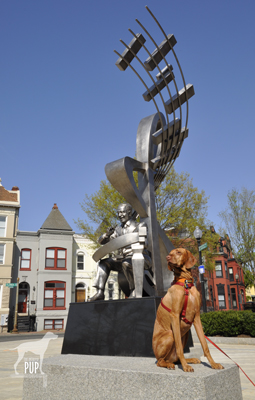
Word had it there was a new statue in town. It was no April Fool’s Day joke, so Tavish the Intrepid Pup was on the case. Our trek on Sunday, April 1, 2012, took us to the intersection of Florida Avenue and T Street, N.W. in Washington, DC, where we found the recently-installed memorial to DC native son and jazz legend Edward Kennedy “Duke” Ellington (1899 – 1974). Entitled Encore, the 20-foot stainless steel sculpture on a granite base is the work of artist Zachary Oxman, whom DC’s Commission on the Arts and Humanities selected in a design competition. A work crew had gingerly craned the sculpture into place on Ellington Plaza just a few days earlier on March 29th. It depicts Duke Ellington at a piano, the keyboard of which soars upward like a melody itself. Ellington is perched on an oversized treble clef adapted from Ellington’s own handwritten musical scores.
Ellington’s childhood was spent in several different family homes all in the vicinity of Howard University. He began taking piano lessons at about age 8. As a teenager he worked as a soda jerk, and at age 14, he composed his first original score, Soda Fountain Rag. Because Team Tavish can’t resist a good canine reference, we have to add that this song became more commonly known as Poodle Dog Rag, taking its name for the Poodle Dog Cafe, a Georgia Avenue establishment where Ellington often played. Ellington left DC for New York in 1923 but frequently returned for performances, contributing to a vibrant African American music and theater scene in DC that also featured the likes of Jelly Roll Morton, Pearl Bailey, and Cab Calloway. In his lifetime Ellington composed more than 3,000 songs (think Take the “A” Train, It Don’t Mean a Thing, and Mood Indigo) and gave some 20,000 concerts in the United States and abroad. For a city that proudly claims Ellington’s roots and has several things Ellington—among them: the Duke Ellington School of the Arts, a robust Ellington collection at the Smithsonian National Museum of American History, and many references along Cultural Tourism DC’s Georgia Avenue/Pleasant Plains and Greater U Street Heritage Trails—it’s high time there’s a statue for him, too.
Dogging the Details
38°54′55.96″N, 77°1′14.37″W
Duke Ellington Plaza, Washington, DC
 After viewing Encore, we continued on our walk eastward down the block into the LeDroit Park Historic District, an architecturally and historically significant subdivision dating to the mid 1870s. The excursion earns a “1” on the Wag-A-Meter as it’s pleasant and easy to take everything in within a short distance. An unexpected bonus on the return was that we discovered Bistro Bohem at the corner of 6th Street and Florida Avenue, N.W. Drawn by the Czech flag flying above the entrance (a member of Team Tavish has Czech heritage), we stopped to take a look at the menu posted outside. Much to our surprise, a man burst through the door moments later and enthusiastically rushed to pet Tavish, who loved every minute of it. Turns out that this vizsla-phile is a former vizsla owner and none other than Bistro Bohem founder Jarek Mika. We happened to catch Mika in the gap between the lunch and dinner shifts on just his 10th day in business offering a modern twist on classic Eastern European cuisine. We plan to return to the restaurant sans the Intrepid Pup, but in the meantime, it was refreshing to see that Mika had completely renovated a rundown, vacant building. When we said we’d just been to see the Ellington statue, Mika agreed that it’s already proven to be a nice addition to the streetscape. As sculptor Oxman noted in his original concept for the Ellington Encore piece “[The treble clef] is used as the entry to a musical score, just as this sculpture represents the gateway to this community.” Truly this is neighborhood experiencing a rebirth. Nearby Shaw’s Tavern has recently re-opened under new ownership. A block of condominiums is being developed incorporating the brickwork facades of the original storefronts. And, finally there’s the historic 1910 Howard Theatre. Once the “largest colored theatre in the world” drawing to its stage such icons as Booker T. Washington, Ella Fitzgerald, the Duke himself, and later, the Supremes, Marvin Gaye, Chuck Brown, Aretha Franklin and others, this arts landmark had languished in neglect upon shuttering in the early 1980s. In the wake of a $29 million restoration begun in 2010, the Howard Theatre will be celebrating its grand re-opening on April 12, 2012. Indeed, as Ellington might say, it’s enough to get you “in a sentimental mood.”
After viewing Encore, we continued on our walk eastward down the block into the LeDroit Park Historic District, an architecturally and historically significant subdivision dating to the mid 1870s. The excursion earns a “1” on the Wag-A-Meter as it’s pleasant and easy to take everything in within a short distance. An unexpected bonus on the return was that we discovered Bistro Bohem at the corner of 6th Street and Florida Avenue, N.W. Drawn by the Czech flag flying above the entrance (a member of Team Tavish has Czech heritage), we stopped to take a look at the menu posted outside. Much to our surprise, a man burst through the door moments later and enthusiastically rushed to pet Tavish, who loved every minute of it. Turns out that this vizsla-phile is a former vizsla owner and none other than Bistro Bohem founder Jarek Mika. We happened to catch Mika in the gap between the lunch and dinner shifts on just his 10th day in business offering a modern twist on classic Eastern European cuisine. We plan to return to the restaurant sans the Intrepid Pup, but in the meantime, it was refreshing to see that Mika had completely renovated a rundown, vacant building. When we said we’d just been to see the Ellington statue, Mika agreed that it’s already proven to be a nice addition to the streetscape. As sculptor Oxman noted in his original concept for the Ellington Encore piece “[The treble clef] is used as the entry to a musical score, just as this sculpture represents the gateway to this community.” Truly this is neighborhood experiencing a rebirth. Nearby Shaw’s Tavern has recently re-opened under new ownership. A block of condominiums is being developed incorporating the brickwork facades of the original storefronts. And, finally there’s the historic 1910 Howard Theatre. Once the “largest colored theatre in the world” drawing to its stage such icons as Booker T. Washington, Ella Fitzgerald, the Duke himself, and later, the Supremes, Marvin Gaye, Chuck Brown, Aretha Franklin and others, this arts landmark had languished in neglect upon shuttering in the early 1980s. In the wake of a $29 million restoration begun in 2010, the Howard Theatre will be celebrating its grand re-opening on April 12, 2012. Indeed, as Ellington might say, it’s enough to get you “in a sentimental mood.”

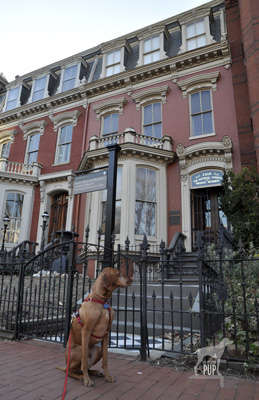
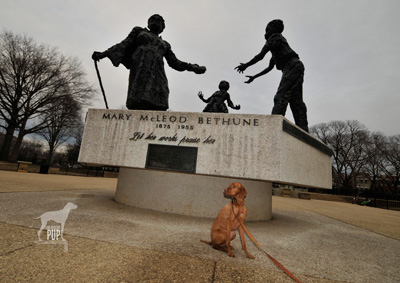

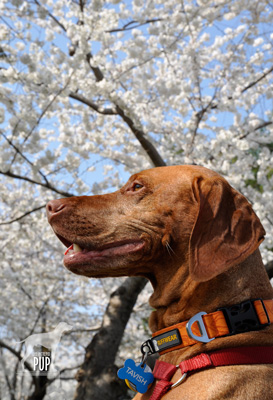

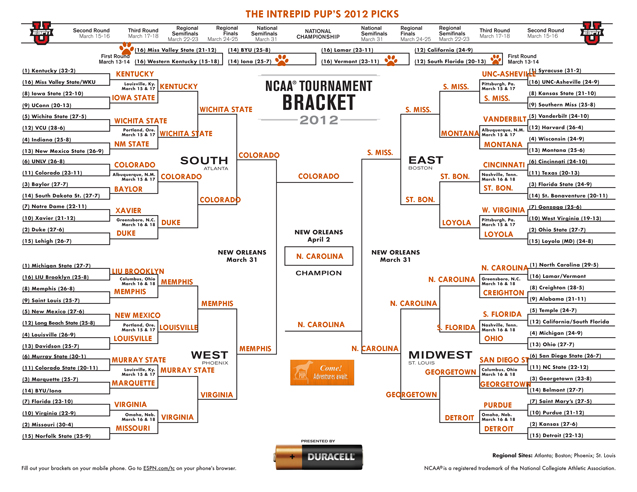
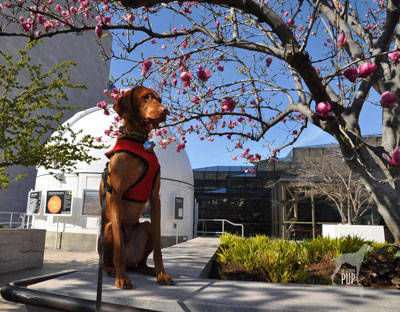 With all the recent talk of feisty solar flares amping up the activity of the Northern Lights and having the potential to wreak a little havoc with power grids and GPS devices here on Earth, the Intrepid Pup turns his attentions to the firmament. And what better place to whet one’s celestial appetite than the
With all the recent talk of feisty solar flares amping up the activity of the Northern Lights and having the potential to wreak a little havoc with power grids and GPS devices here on Earth, the Intrepid Pup turns his attentions to the firmament. And what better place to whet one’s celestial appetite than the 








